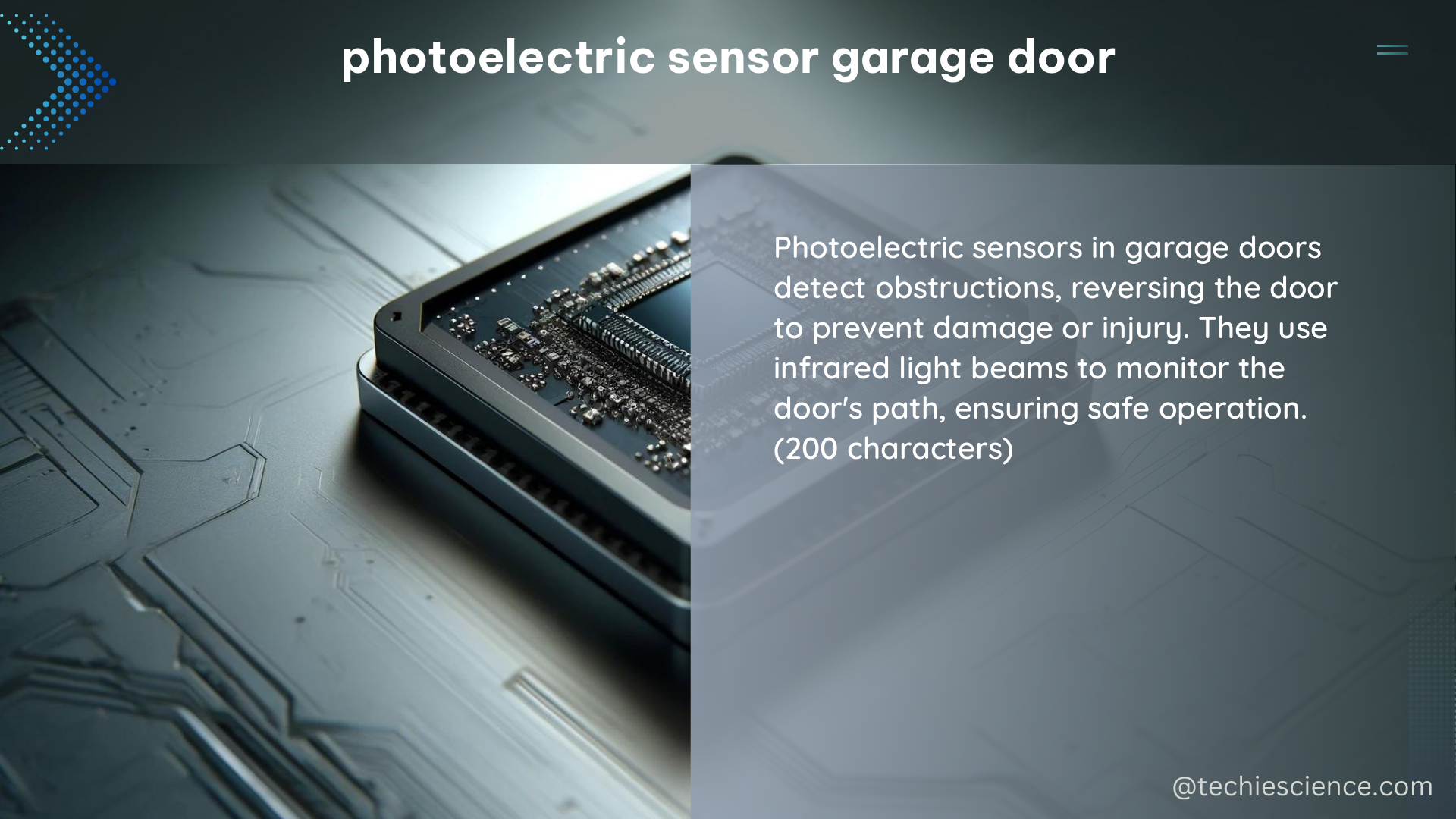Photoelectric sensors are a critical safety feature in modern garage door systems, ensuring the smooth and secure operation of these essential home components. These sensors use a beam of infrared light to detect obstructions in the path of the garage door, triggering an immediate stop or reversal of the door’s movement to prevent damage or injury. In this comprehensive guide, we’ll delve into the technical specifications, installation considerations, and maintenance requirements of photoelectric sensors for garage doors, providing you with a valuable resource for understanding and optimizing this essential safety feature.
Understanding Photoelectric Sensor Specifications
Photoelectric sensors for garage doors are designed to meet a range of performance and environmental requirements, ensuring reliable and consistent operation. Let’s explore the key specifications in detail:
Detection Range
The detection range of a photoelectric sensor is the distance at which the sensor can reliably detect an obstruction in the door’s path. Typical detection ranges for garage door sensors can vary from 6 to 30 inches, depending on the model and manufacturer. This wide range allows for flexibility in sensor placement and ensures effective coverage of the door’s opening.
Beam Width
The width of the infrared beam emitted by the photoelectric sensor is another critical specification. Beam widths can range from 1/4 inch to 1 1/2 inches, with narrower beams providing more precise detection and wider beams offering a larger coverage area. The optimal beam width will depend on the specific garage door setup and the desired level of sensitivity.
Response Time
The response time of a photoelectric sensor is the time it takes for the sensor to detect an obstruction and send a signal to stop or reverse the door’s movement. This parameter is crucial for ensuring the safety of the system, with response times typically ranging from 10 to 100 milliseconds. Faster response times can help prevent damage or injury in the event of an obstruction.
Operating Environment
Garage door photoelectric sensors are designed to operate in a wide range of environmental conditions, with typical operating temperature ranges from -4°F to 158°F. This ensures reliable performance in both cold and hot climates, allowing for year-round use without compromising the sensor’s functionality.
Power Requirements
Most photoelectric sensors for garage doors operate on either 120V AC or 24V DC power, depending on the specific model and installation requirements. Ensuring the correct power supply is essential for proper sensor operation and integration with the garage door system.
Mounting Height
The mounting height of a photoelectric sensor can vary, but it is typically installed 4 to 6 inches above the floor or garage door track. This positioning allows the sensor to effectively detect obstructions at the appropriate height while minimizing the risk of interference from debris or other obstacles.
Housing
Photoelectric sensors for garage doors are typically housed in a durable plastic or metal enclosure that is resistant to impact and weather. This protective housing helps to ensure the sensor’s longevity and continued reliable performance, even in challenging outdoor environments.
Installation and Maintenance Considerations

Proper installation and regular maintenance are crucial for ensuring the optimal performance and longevity of your garage door’s photoelectric sensors. Here are some key considerations:
Sensor Alignment
Accurate alignment of the photoelectric sensor is essential for reliable detection of obstructions. Carefully follow the manufacturer’s instructions for positioning and aligning the sensor to ensure the infrared beam is properly directed across the door’s opening.
Sensor Placement
The mounting location of the photoelectric sensor can impact its effectiveness. Sensors are typically installed 4 to 6 inches above the floor or garage door track, but the specific placement may need to be adjusted based on the door’s dimensions, track configuration, and other factors.
Sensor Maintenance
Regular cleaning and inspection of the photoelectric sensor can help maintain its performance over time. Gently wipe the sensor’s lenses and housing to remove any accumulated dust or debris, and check for any physical damage or misalignment that may require adjustment or replacement.
System Integration
Ensure that the photoelectric sensor is properly integrated with the garage door’s control system. This may involve connecting the sensor to the door’s power supply, programming the sensor’s settings, and verifying that the door’s safety features are functioning correctly.
Conclusion
Photoelectric sensors are a critical safety component in modern garage door systems, providing reliable detection of obstructions and helping to prevent damage or injury. By understanding the technical specifications, installation requirements, and maintenance best practices, you can ensure your garage door’s photoelectric sensor continues to operate effectively, keeping your family and property safe.
References:
- DFW International Airport 2015 Design Criteria Manual – Rev 2
- Protection of Assets: Physical Security [Hardcover ed.] 1934904376
- Effective Physical Security – NIBM E-Library Portal

The lambdageeks.com Core SME Team is a group of experienced subject matter experts from diverse scientific and technical fields including Physics, Chemistry, Technology,Electronics & Electrical Engineering, Automotive, Mechanical Engineering. Our team collaborates to create high-quality, well-researched articles on a wide range of science and technology topics for the lambdageeks.com website.
All Our Senior SME are having more than 7 Years of experience in the respective fields . They are either Working Industry Professionals or assocaited With different Universities. Refer Our Authors Page to get to know About our Core SMEs.